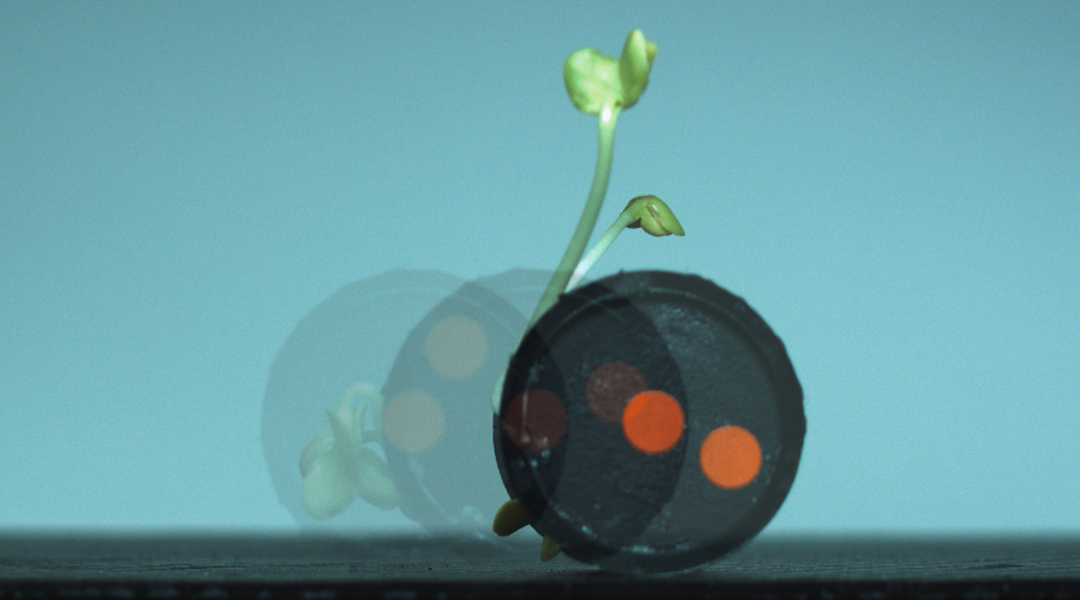A robot made from radish sprouts and the rise of plant-based machines
New research takes a revolutionary approach to robotics, suggesting that plants could provide the muscle power driving future machines.
While the idea of moving plants may sound like something straight out of John Wyndham’s Day of the Triffids, these motile plants would serve Earth and humanity rather than threaten them, functioning as eco-friendly robotic systems.
Instead of the menacing Triffids from that post-apocalyptic tale, future humans could even consume these plant-based robots after their work is done.
A new take on robotics
Humanity’s growing reliance on robots is set to continue, fueling the demand for sustainable robots that reduce resource consumption and can harmlessly break down in nature without leaving behind any mechanical remains.
According to a paper published in the journal Advanced Science, plants could meet both these needs.
“We humans can move by muscles,” said Jun Shintake, an assistant professor at the University of Electro-Communications, Tokyo and one of the scientists on the study. “In our plant robots, the plants play the role of muscles. In other words, these are robots that are driven by plants.
“Normally, plants are rooted in the ground and do not move from their spot. We recognize plants as static objects. What is revolutionary about our work is that we have broken this [idea] by making it possible for plants to move on the ground.”
Shintake is part of a team working on developing actuators, sensors, and robots made of soft materials known as artificial muscles. Of course, a reasonable question to raise at this point is how plants move to provide this “muscle” for robots. The movement the team considers in their paper is the slow growth of plants as a result of the conversion of light to chemical energy via photosynthesis.
“My inspiration for plant-based robots came from something everyone has experienced. One day, I noticed that the grass by the roadside had grown taller without me realizing it,” Shintake explained. “At that moment, I intuitively understood that plants move in the sense that they grow, and I thought this growth could be harnessed as a muscle for robots.”
Shintake added that the team’s plant robots move very slowly from a human perspective, as you may imagine. This means they constitute systems that work on an unconventional time scale, offering a new perspective on robots along with an environmentally friendly perspective.
“While we are happy to have so many robots in our society, their increased production and disposal increases their environmental burden. Therefore, it is important to give robots sustainability to save resources on Earth,” Shintake continued.
“Moreover, robots are expected to perform a variety of tasks in natural environments, but if they fail in such places, they will directly become waste and may cause environmental destruction. We believe that environmental friendliness is also an important characteristic of robots.”
A robot made from radish sprouts
Shintake and colleagues reason plants are inherently environmentally friendly because they return to the soil when they wither. This also extends to the work the robots would perform while still functioning.
“Because plants are so slow, the plant robots can perform tasks without attracting the attention of their surroundings. In a sense, it is stealth movement,” the University of Electro-Communications explained. “For the same reason, a plant can interact with surrounding objects safely and gently. If the plant used is a vegetable, then the robot can be eaten after the task is completed.”
With that edible concept in mind, the team tested their plant-based robot idea by developing a robot made from radish sprouts. They tested the system in an environment suited to these plants and captured the movements using time-lapse photography.
“We observed that the plant robot was able to travel 14.6 mm with an average speed of 0.8 mm per hour by rotating its body,” Shintake explained.
“The moment when the plant robot first moved was shocking indeed,” he continued. “It was also interesting to note that the relationship between the growing displacement and force of the plant revealed in this study showed a similar trend to that of the artificial muscles used in conventional robots.”
Where might they find application
The researchers believe that plant-based robots would be scalable because of the diversity in size and shape of plant species. They argue that trees could be employed as mountain climbing robots, while smaller planets could be grown in arrangements to create large robotic systems.
“It may also be capable of environmental purification by greening uninhabited islands or polluted areas that are inaccessible to humans,” Shintake said. “From the perspective of remote locations, it could even be applied to planetary terraforming.”
#PlantPoweredMachines#RadishRobot#BioTechRevolution#GreenTech#LivingMachines#BotanicEngineering#EcoRobotics#SustainableInnovation#PlantBasedTech#FutureOfAutomation#BioRobots#EcoFriendlyAI#OrganicRobotics#NatureInTech#SproutTech#TechWithLife
International Young Scientist Awards
Website link: youngscientistawards.com
Nomination Link: https://youngscientistawards.com/award-nomination/?ecategory=Awards&rcategory=Awardee
Contact Us: support@youngscientistawards.com _________________________________________________________________________________________________________
Social Media:
Twitter : https://twitter.com/youngsc06963908
Linkedin- : https://www.linkedin.com/in/shravya-r...
Pinterest : https://in.pinterest.com/youngscienti...
Blog : https://youngscientistaward.blogspot....
Tumblr : https://www.tumblr.com/blog/shravya9




Comments
Post a Comment